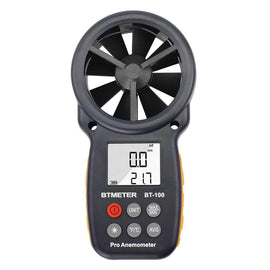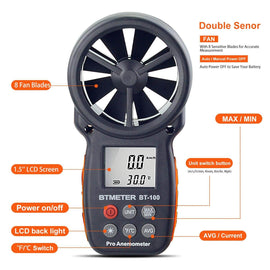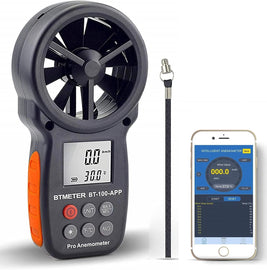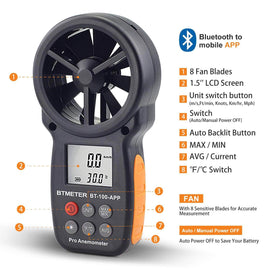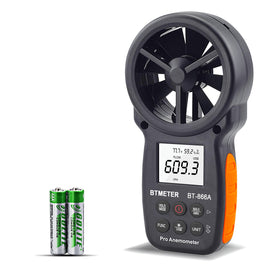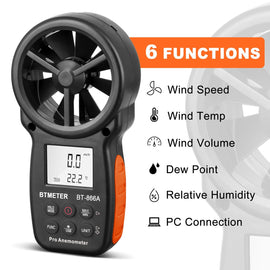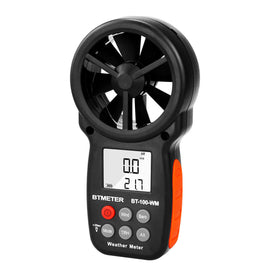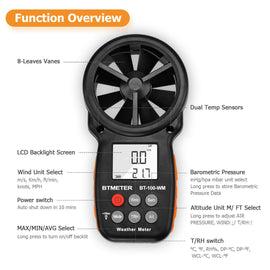Have Questions?
-
Guaranteed Fitment
Always the correct part
-
In-House Experts
We know our products
-
Added Value
Mounting, Balancing
-
Wordwide Delivery
Free shipping on all orders
BTMETER BT-705A Signalaufnehmer mit induktiver Klemme, Messbereich von 600 U/min bis 12.000 U/min
PRODUKTBESCHREIBUNG
★【Wichtiger Hinweis】Dieser Signalaufnehmer muss mit einem Multimeter oder Oszillographen zur Messung der Drehzahl des Fahrzeugmotors verwendet werden....
PRODUKTBESCHREIBUNG
★【Wichtiger Hinweis】Dieser Signalaufnehmer muss mit einem Multimeter oder Oszillographen zur Messung der Drehzahl des Fahrzeugmotors verwendet werden. Es wird empfohlen, es mit den Kfz-Multimetern BTMETER BT-770K, BT-90K und BT-6688D zu verwenden.
★【Toller Begleiter für Automotive-DMMs】 Ausgestattet mit standardmäßigen 3/4-Zoll-Bananensteckern, was bedeutet, dass es mit den meisten Automotive-Messgeräten kompatibel ist, die über einen Signaleingang verfügen.
★ 【Induktive Abnehmerkabel für BT-770K BT-90K】 Funktioniert perfekt mit BTMETER-Automobil-Multitestern wie: BT-770K, BT-90K, BT-6688D. Zur Messung des sekundären Endleiters des Funkens der Hochspannungs-Zündspule.
★【Einfach zu bedienen】Klemmen Sie das Zündkerzenkabel so fest, dass die Markierung „→“ auf dem induktiven Aufnahmewerkzeug auf die Zündkerze zeigt, um die Motordrehzahl zu messen.
★【Hinweis bei der Messung】Der Abstand zwischen der Zündkerze und der Klemme des Instruments muss während des Tests weniger als 3,93 Zoll (10 cm) betragen und die Zündfrequenz des Motorzündsystems muss zwischen 10 Hz und 400 Hz liegen.
BTMETER BT-705A Induktive Signalaufnahmeklemme
• Das Signalaufnahmekabel ist professionell für die Einstellung und Diagnose von Automobilmotoren konzipiert und kann mit einem Oszillographen oder Multitester zur Messung von Frequenz oder Drehzahl verwendet werden.
• Das BT-705A-Tonabnehmerset muss mit digitalen Multimeterfunktionen mit Signaleingang funktionieren und in der Lage sein, Parameter von Fahrzeugmotorsystemen zu messen.
• Die induktive Klemme passt sich dem Standard-Bananenstecker von 3/4 Zoll an und ist mit den meisten Multimetern mit Signaleingangsfunktionen kompatibel. Es funktioniert perfekt mit den Automotive-Multitestern BT-770K, BT-90K und BT-6688D.
Merkmale:
♦ Drehzahlmessbereich: 600 U/min ~ 12.000 U/min
♦ Erkennungsmodus: Magnetische Induktionsmessung
♦ Anwendbarer Motor: Benzinmotor mit Zündkerzenzündung
♦ Erkennungsort: Sekundäre Endleiter der Hochspannungs-Zündspule
Betriebsanleitung
1. Schließen Sie die Klemme des Instruments an ein Zündkerzenkabel an, wobei die Markierung „→“ auf dem Instrument zur Zündkerze zeigen muss.
2. Verbinden Sie die Stecker des Instruments mit den Eingangsanschlüssen des Kfz-Messgeräts (der schwarze Stecker dieses Instruments sollte an die „COM“-Buchse des Kfz-Messgeräts angeschlossen werden).
3. Stellen Sie das Kfz-Messgerät auf den entsprechenden Messbereich ein.
4. Lesen Sie das Ventil auf dem LCD-Display ab. Wenn kein Messwert empfangen wird, lösen Sie die Klemme, drehen Sie sie um und schließen Sie sie erneut an.
7 Days free refund, 15 Days free replace, 365 Days Warranty, Lifetime Tech-support.

